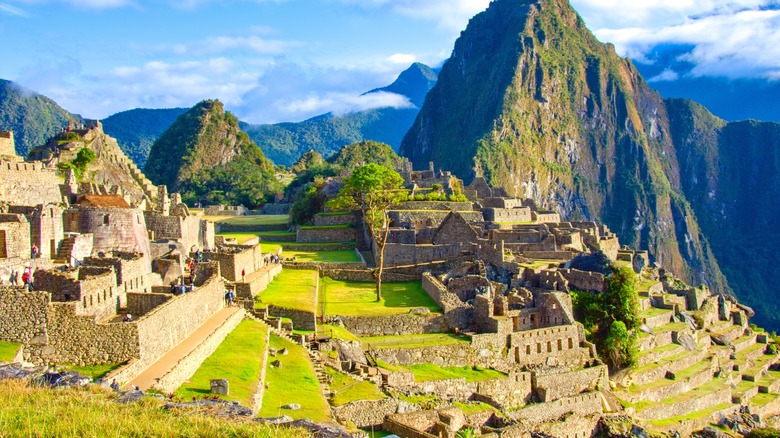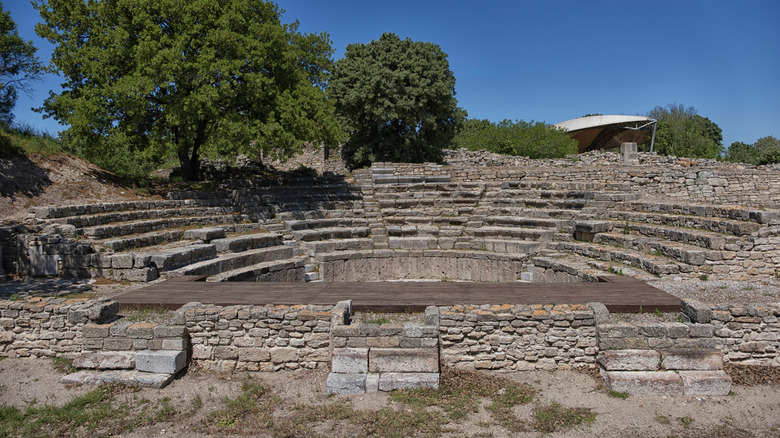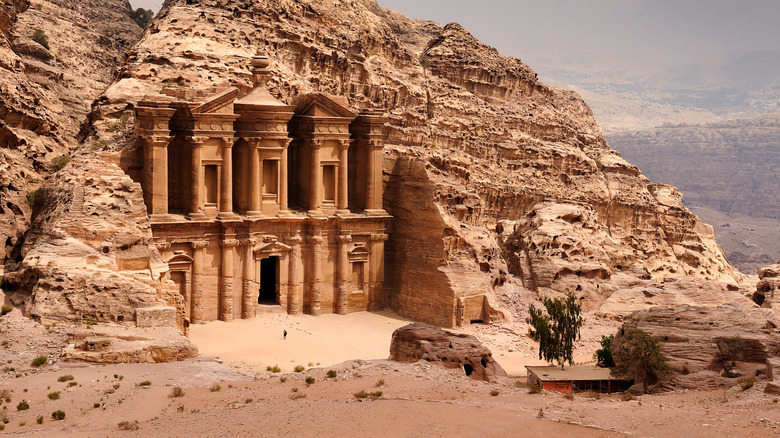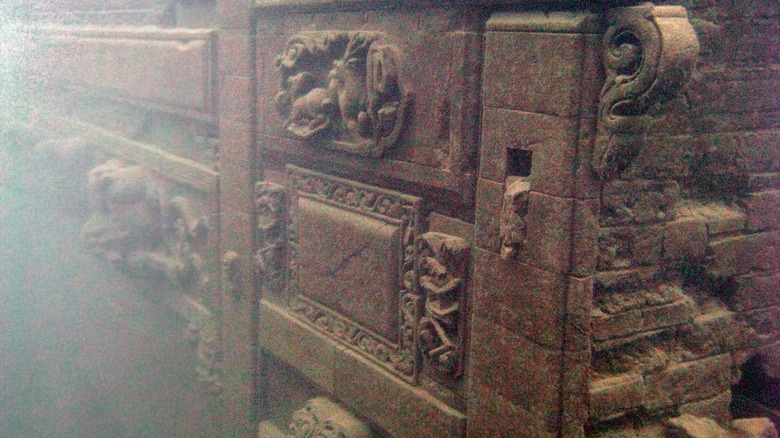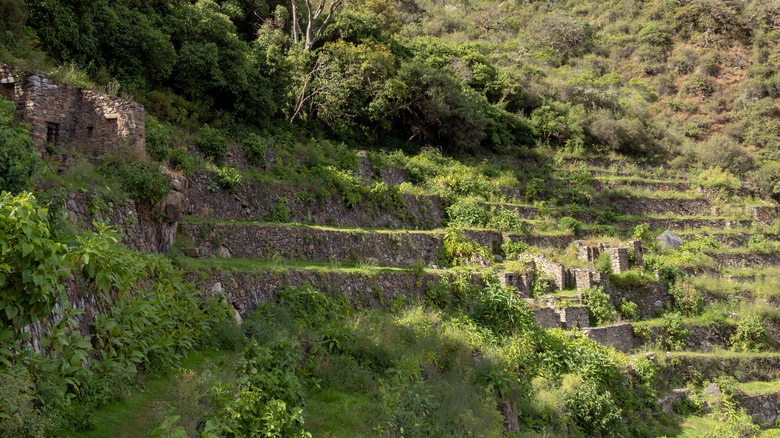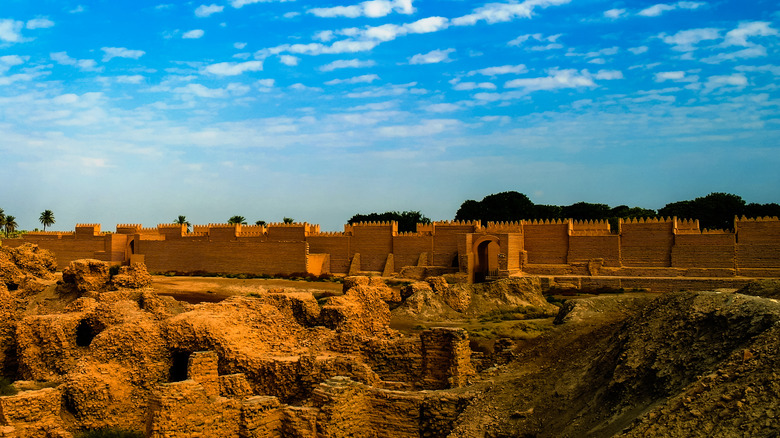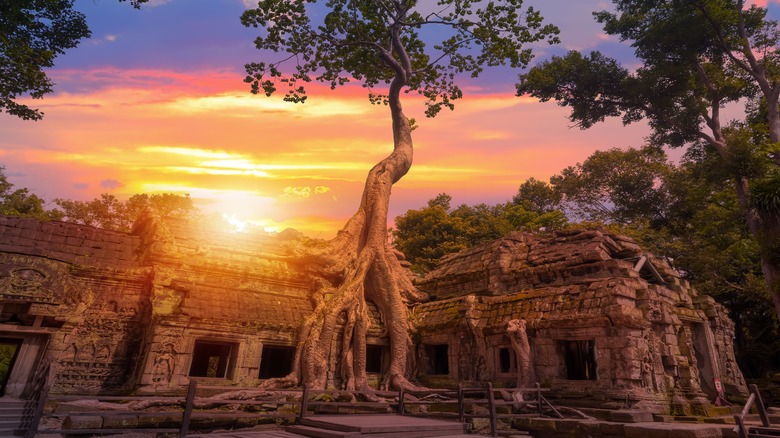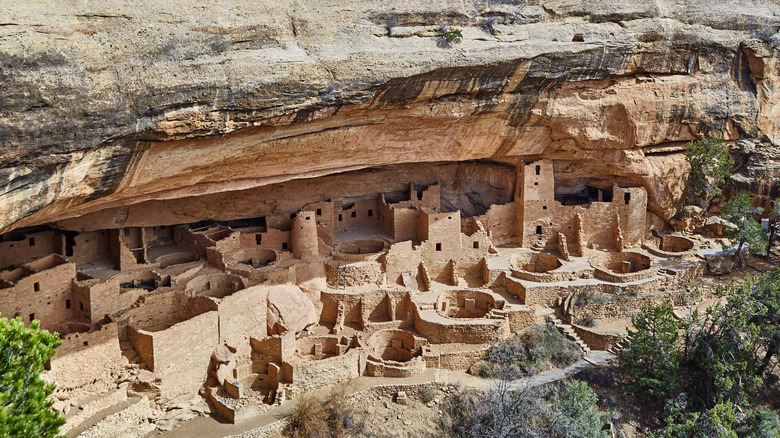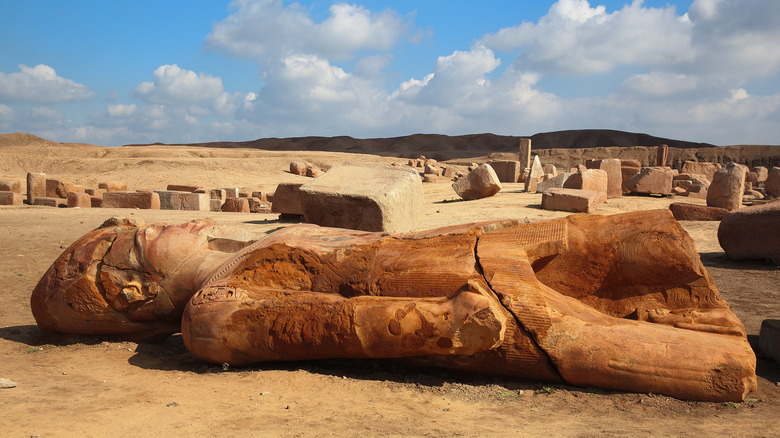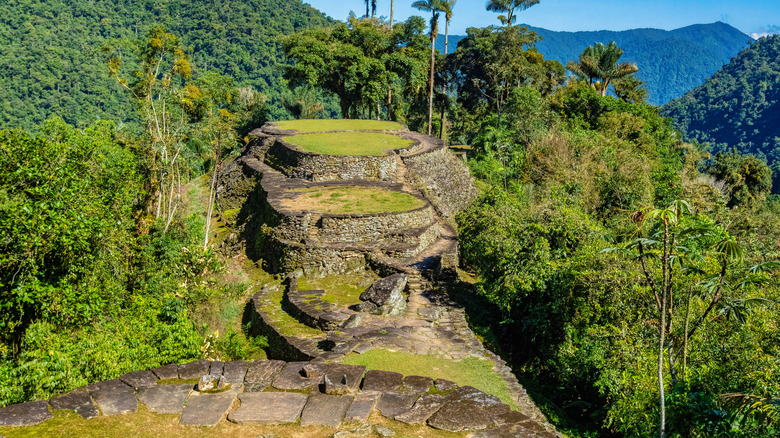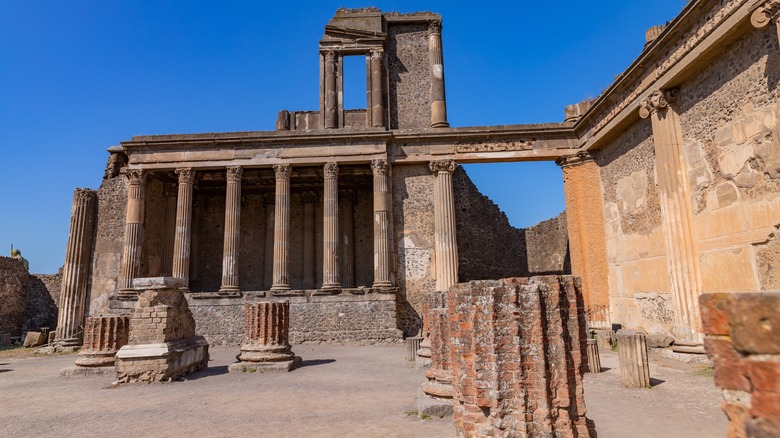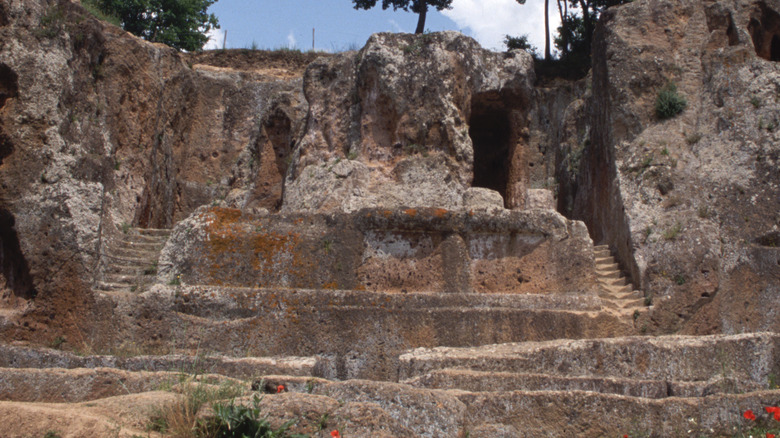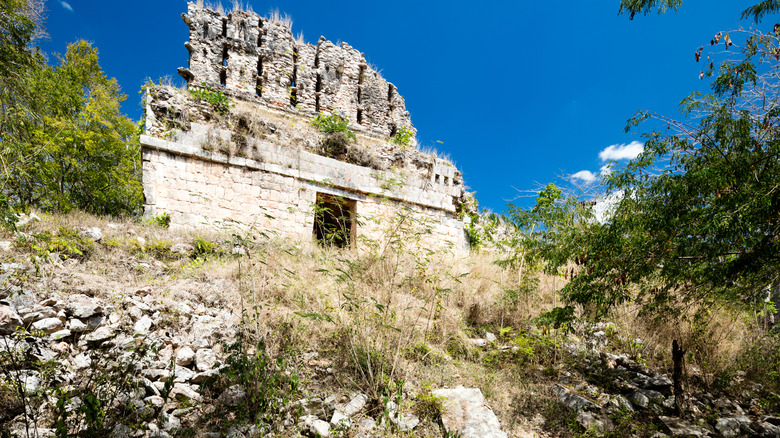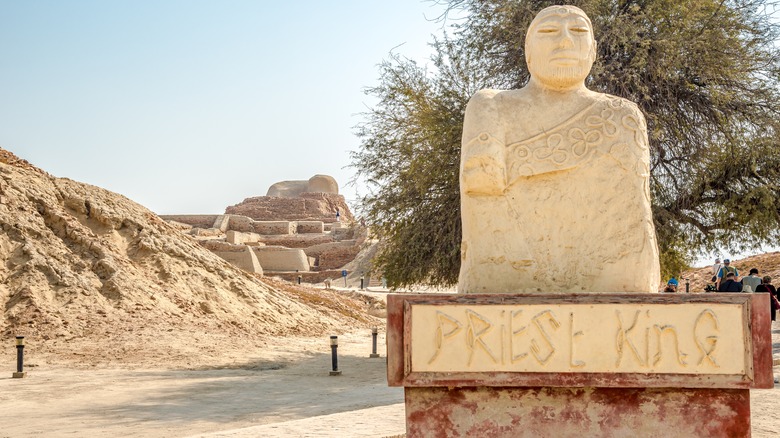14 Ancient Places Rediscovered By Scientists
History is like a giant jigsaw puzzle, with pieces just waiting to fill in our story. While some might take time to put together and others are forever lost to time, we're constantly finding new ways to understand our ancestors. Every year, archaeologists unearth, sometimes literally, crucial parts of the past that add to our understanding of human history. They piece together the lives of ancient people, revealing their clever inventions, their daily struggles, and how they lived.
That's why we're taking a closer look at 14 of the most mind-blowing ancient sites that have been rediscovered in modern times. Each of these finds offers a unique window into worlds long gone, forcing us to rethink what we thought we knew about human history and reminding us of the lasting impact of those who came before us. Whether it's lost cities swallowed by jungles, settlements hidden beneath the sea, or biblical towns we didn't think were real, each of these places is now telling us incredible stories about our past.
Machu Picchu
Machu Picchu, the iconic Incan citadel, wasn't exactly "lost" to the local people, but it remained largely unknown to the outside world until its official rediscovery in 1911 by American historian Hiram Bingham. Nestled high in the Andes Mountains of Peru (just one of the mountains located in the Southern Hemisphere), this breathtaking site had been quietly overlooking the Urubamba watershed, hidden by dense vegetation for centuries. Its remote location and natural camouflage made it a hidden gem, preserved from outside influence until Bingham's expedition brought it to international attention.
Bingham's discovery revealed an incredibly sophisticated and well-preserved urban center, believed to have been a royal estate or sacred religious site built around the mid-15th century. The intricate stonework, precise agricultural terracing to combat soil erosion, and sophisticated water systems highlight the advanced engineering and architectural skills of the Inca. Its strategic location and defensive features suggest it also played a role in regional control. The lack of evidence for large-scale destruction indicates the city was likely abandoned, perhaps due to the Inca Empire's collapse in the late 16th century. In recognition of its cultural significance, Machu Picchu was designated a UNESCO World Heritage site in 1983 and is one of the Seven Wonders of the New World.
Troy
The legendary city of Troy, made famous by Homer's "Iliad," wasn't just a myth. Its ruins, located in modern-day Turkey, were first systematically excavated in the 1870s by Heinrich Schliemann. While his discovery confirmed the site's existence and its long history, Schliemann's methods were far from ideal. He was an enthusiastic amateur, not a trained archaeologist, and his digging techniques were often hasty and destructive, prioritizing finding treasure over careful documentation. This caused significant damage to the site, as he essentially bulldozed through later levels to reach what he believed were the earlier, more significant ones, losing valuable information about Troy's history.
What we've learned from Troy's layers of ruins is a complex story of a city repeatedly built, destroyed, and rebuilt over thousands of years. The site, known as Hisarlik, reveals at least nine distinct layers of settlement, each representing a different period of Troy's history. The famous Troy VI and VII layers, dating to the Bronze Age, are believed to be the Troy of Homer's epic. Archaeological evidence suggests a prosperous city with sophisticated fortifications, trade networks, and a rich cultural life. In 1998, the Archaeological Site of Troy was designated a UNESCO World Heritage site, recognizing its historical and cultural importance.
The Rose city (Petra)
Petra, the "Rose City" carved into the sandstone cliffs of southern Jordan, was a major trading hub in ancient times. Though known to local Bedouin tribes, its existence was revealed to the Western world in 1812 by Swiss explorer Johann Ludwig Burckhardt. After navigating through the narrow Siq canyon, he stumbled upon the breathtaking city, hidden for centuries. Famously, it also served as the dramatic backdrop for the lost temple hiding the Holy Grail in the movie, "Indiana Jones and the Last Crusade," bringing its iconic imagery to a wide audience.
Burckhardt's find gave the contemporary world its first look into the creative thinking and resourcefulness of the Nabataeans, the people who built Petra. This city, dating back to around the fourth century B.C., wasn't just a stunning architectural feat; it was a strategically located crossroads for trade routes connecting Arabia, Egypt, and the Mediterranean. Petra's wealth was built on its control of incense, spice, and other valuable trade goods, and that allowed the ancient Nabatean engineers to construct elaborate tombs, temples, and water systems all carved into the rock face. Shifts in trade routes and multiple earthquakes led to the city's eventual decline, but its legacy remains as a remarkable example of human adaptation and artistry. In 1985, Petra was designated a UNESCO World Heritage site and is one of the Seven New Wonders of the World.
Shicheng
Submerged beneath the waters of Qiandao Lake in China's Zhejiang province lies an ancient time capsule whose rediscovery is a bit of a misnomer. Shicheng, or "Lion City" in Mandarin, is sometimes referred to as the "Atlantis of the East." Unlike the mythical Atlantis, though, Shicheng's submersion was no accident; it was intentionally flooded in 1959 to make way for the Xin'an Dam and its hydroelectric station. Shicheng's "rediscovery" occurred in 2001, when the Chinese government launched an expedition to assess the city's remains and found it was astonishingly well preserved.
Underwater exploration has revealed a fascinating look into ancient Chinese architecture and urban planning. Dating back to the Ming and Qing dynasties (1368 — 1912), Shicheng served as a significant political and economic hub in the region. Shicheng's numerous temples, city walls, and residential buildings feature intricate stone carvings, and the level of preservation is astounding, with wooden beams and staircases still intact. While the decision to flood Shicheng is regrettable, at least from a historical preservation standpoint, it has inadvertently created an underwater museum that gives a unique glimpse into a lost era. It's also still in the process of being fully mapped so if you want a little archaeology adventure and have both deep water and night diving experience, you can book a dive to visit Shicheng between April and November with one of the approved dive groups.
Vilcabamba
Vilcabamba, often called the "Lost city of the Incas," served as the final refuge for the Incan emperor Manco Inca Yupanqui after the fall of Cuzco to the Spanish. Its precise location remained shrouded in mystery for centuries, and was a matter of some debate, but was finally pinpointed in 1964 by explorer Gene Savoy at the site of Espiritu Pampa, deep within the Peruvian jungle. Even today, the site remains partially unexplored, with recent findings indicating pre-Incan inhabitants, the Wari, also occupied the area.
Archaeological evidence suggests that Espiritu Pampa was both a political and religious center, with sophisticated architecture and agricultural practices that helped the Inca maintain some semblance of their way of life for as long as possible. The site's remote location and the dense jungle that surrounded it contributed to its ability to remain hidden for so long while the artifacts we've found so far provide valuable insights into the Inca's resilience and their efforts to preserve their culture in the face of overwhelming odds.
Babylon
Babylon, the legendary city that stood in the temperature and climate of ancient Mesopotamia, was once a symbol of opulence and power. While its existence was known through biblical and classical texts, the true scale of its physical location was a mystery until the late 19th century. German archaeologist Robert Koldewey led extensive excavations from 1899 to 1917, revealing the city's ruins near modern-day Hillah, Iraq.
Koldewey's work revealed the impressive size and complexity of Babylon, uncovering the foundations of the famed Ishtar Gate, the towering walls of the city, and remnants of palaces and temples. These findings painted a picture of a sophisticated urban center with advanced architecture, engineering, and a rich cultural life, holding historical significance for a veritable "who's who" of the politically infamous: Hammurabi, Nebuchadrezzar I and II, Cyrus II, and Xerxes I, to name a few. However, archaeological work at Babylon didn't stop with Koldewey. Modern efforts focus on conservation, documentation, and ongoing research, using techniques like digital modeling to further understand the site. Recent discoveries, including cuneiform tablets, continue to offer new insights into Babylonian law, mathematics, astronomy, and daily life. Despite challenges from modern warfare and past damage, organizations like the World Monuments Fund are actively involved in preserving what remains.
Angkor
Angkor, the sprawling capital of the Khmer Empire, was a vast complex of temples and urban areas hidden within the jungles of Cambodia. While some temples remained sites of pilgrimage, much of the city became overgrown after its abandonment. The ruins were brought to wider European attention in the 1860s by French explorer Henri Mouhot, although it wasn't until the early 20th century that extensive archaeological work began to reveal the city's true scale. This city thrived from the ninth to the 15th centuries, until researchers believe a period of intense monsoons crippled its advanced water management system.
What archaeologists have uncovered at Angkor is a testament to the power and sophistication of the Khmer civilization. The site, centered around the magnificent Angkor Wat temple, reveals a complex urban landscape with sophisticated irrigation systems, vast reservoirs, and intricate stone carvings. The sheer size of Angkor, which once supported a population of nearly a million people, speaks to the empire's wealth and organizational capacity. The temples and carvings depict scenes from Hindu and Buddhist mythology, as well as daily life, providing insights into the Khmer's religious beliefs and social structures. Recognizing its exceptional cultural significance, the Angkor Archaeological Park was designated a UNESCO World Heritage site in 1992.
Mesa Verde
For centuries, tales of legendary golden cities like Cibola fueled expeditions across the American West, though none were ever found. It was only in the 19th century that the true treasures of the region were revealed. These treasures weren't made of gold, though, but human ingenuity and resilience — like Mesa Verde. While geologist Dr. John S. Newberry was the first European to officially record the name Mesa Verde, it was pioneer photographer William Henry Jackson's images of the cliff dwellings in 1874 that truly captured the world's attention.
The archaeological work at Mesa Verde has revealed a remarkable testament to the ingenuity of the Ancestral Pueblo people. The cliff dwellings were constructed between the sixth and 13th centuries and are a stunning example of architectural adaptation to an incredibly challenging environment. The intricate stone structures, built into the alcoves of the canyon walls, served as both homes and ceremonial sites while the site's sophisticated water management systems and agricultural practices speak to the advanced knowledge of the ancestral Puebloans. The reasons for their eventual abandonment of Mesa Verde in the 1200's remain a subject of debate, with theories ranging from drought to social upheaval. Concerns about vandalism prompted the U.S. government to protect the area, ultimately leading to the establishment of Mesa Verde National Park in 1906 which became a designated UNESCO World Heritage site in 1978.
Tanis
Imagine a city, once shimmering with the gold of pharaohs, where ancient Egyptian resting places for the dead held secrets whispered only to the Nile. Tanis, a jewel of ancient Egypt, faded from memory as the very river that nourished it shifted, leaving it to crumble in obscurity as a ghost city with its location lost to the sands of time. Then, a determined Frenchman named Pierre Montet, driven by a decade-long obsession, set out to bring it back to light. In 1939, his persistence paid off, and the lost city of Tanis was found once again, providing a tons of information.
Montet's discovery revealed a city that had been a vital political and religious center in the late New Kingdom and Third Intermediate Period of Egypt. The undisturbed royal tombs found within Tanis, containing a wealth of gold and artifacts, provided invaluable insights into ancient Egypt's burial and mummification practices, as well as its artistic capabilities. Those who've seen "Raiders of the Lost Ark," might even recognize Tanis as the hiding place for the Ark of the Covenant, though the cinematic depiction doesn't resemble much of the real archaeological site, which is a shame. And the city's decline, linked to the changing course of the Nile, highlights the vulnerability of even powerful urban centers to environmental shifts; meanwhile, its rediscovery gives us a glimpse into a period of Egyptian history that was once shrouded in mystery.
Ciudad Perdida
Ciudad Perdida, or the "Lost City," is an ancient city nestled deep within the Sierra Nevada de Santa Marta mountains of Colombia. This city, which is so old that it would've been considered ancient during the building of Machu Picchu, was built by the Tairona or Tayrona people, was likely abandoned during the Spanish conquest in the 16th century. While known to local indigenous communities as Teyuna, its existence was largely unknown to the outside world until it was rediscovered and rechristened with its "Lost City" name in 1970's by treasure hunters.
What archaeologists have since revealed is a sophisticated urban center dating back to around 800 A.D., predating Machu Picchu by 600 years. Ciudad Perdida consists of a series of terraces, circular plazas, and intricate stone staircases that climb the mountainside. The city's advanced architecture and urban planning suggest a complex social and political structure while artifacts found at the site, including pottery and stone tools, provide insights into the Tayrona people's daily life and cultural practices. The city was listed as a tentative World Heritage site in 1993 but was removed from consideration in 2022,and its preservation is supported by the World Monuments Fund.
Pompeii
Pompeii, the ancient Roman city frozen in time, stands as a haunting testament to the power of nature. Famously buried under a catastrophic eruption of Mount Vesuvius in 79 A.D., its existence was never truly forgotten. In fact, the ruins were first discovered late in the 16th century by the architect Domenico Fontana, though his findings didn't receive much attention or fanfare. It was not until the 18th century that systematic excavations began, revealing the city in its preserved state, with significant discoveries continuing well into the 19th and 20th centuries.
What these meticulous excavations unveiled was an incredibly detailed snapshot of Roman daily life frozen in volcanic ash. The discovery of shops, homes, and public spaces has allowed archaeologists to reconstruct the daily routines and social structures of Pompeii's inhabitants while the preserved frescoes and mosaics offer invaluable insights into Roman art, religion, and aesthetics. Recognizing its exceptional historical and cultural significance, the Archeological Areas of Pompei, Herculaneum, and Torre Annunziata were designated a UNESCO World Heritage site in 1997.
The Oikos at Sasso Pinzuto
The Etruscan necropolis of Sasso Pinzuto, intimately linked to the nearby settlement on Colle San Pietro, has been a source of archaeological intrigue since the 1830's. Investigations have yielded over 120 chamber tombs, each offering a glimpse into Etruscan burial customs and material culture. Yet, despite these extensive findings, the full picture of Etruscan cult practices remained incomplete until a groundbreaking discovery in 2024.
Recent excavations at the site have unearthed the foundations of an Etruscan temple, or "oikos" — a Greek term for "house" or "dwelling," often used to describe a sacred space in ancient contexts. This rectangular structure measures 6.2 by 7.1 meters and is strategically positioned to overlook the surrounding area, oriented towards the modern-day access road to Colle San Pietro. This discovery is particularly significant because it marks the first substantial architectural evidence of Etruscan cultic buildings. Previously, knowledge of these structures was largely based on polychrome clay slabs found in the region. Excavation continues and each new discovery in the oikos provides valuable insights into the religious practices and architectural styles of the Etruscans, offering a more complete understanding of their cultural and spiritual life.
El Mirador
Deep within the dense jungles of northern Guatemala lies El Mirador, which translates to "the lookout," a once mighty Mayan city that flourished during the Preclassic period – roughly 2000 B.C. to 150 A.D. Though its existence was known to a few intrepid explorers venturing into the region during the late 19th and early 20th centuries, the city's true magnitude remained obscured by the thick vegetation. It was only through the advent of aerial surveys and LiDAR scans in the late 20th and early 21st centuries that the sheer scale and profound importance of El Mirador was fully understood.
What archaeologists have since revealed is a sprawling metropolis that rivaled the more famous Mayan cities of the Classic period, 200 to 950 A.D. El Mirador is notable for its massive Mayan pyramids, including La Danta, one of the largest pyramids in the world. The city's sophisticated architecture, including intricate stucco work and elaborate causeways, speaks to a highly organized and advanced society. The discovery of extensive water management systems and sprawling agricultural terraces suggests a city capable of supporting a large population. However, El Mirador's abandonment remains a subject of ongoing research, with theories suggesting a mix of factors, including environmental degradation, overpopulation, and internal social upheaval.
Mohenjo-daro
In the arid landscapes of modern-day Pakistan, a lost city lay silent for millennia, its secrets buried beneath the sands. Mohenjo-daro, one of the earliest urban centers of the Indus Valley Civilization, remained hidden until its rediscovery in 1922 by Indian archaeologist R.D. Banerji. What emerged from the earth was a sprawling, meticulously planned city that was a testament to a level of urban sophistication rarely seen in such ancient times. After approximately six centuries of flourishing, Mohenjo-daro was abandoned, a mystery that continues to intrigue archaeologists, with a shifting Indus River being a leading theory.
The excavations at Mohenjo-daro revealed remarkable planning and a clear demonstration of the advanced urban planning and engineering of the Indus Valley Civilization. Its grid-like layout, characterized by standardized brick construction, sophisticated drainage systems, public sewage management, and a large public bath, suggests a highly organized society. The absence of elaborate palaces or temples, however, has sparked debates about the nature of its political and religious structures. The discovery of standardized weights and measures, along with evidence of trade with distant regions, indicates a complex economic system. In 1980, UNESCO recognized Mohenjo-daro's unique place in human history, adding it to the World Heritage List.

